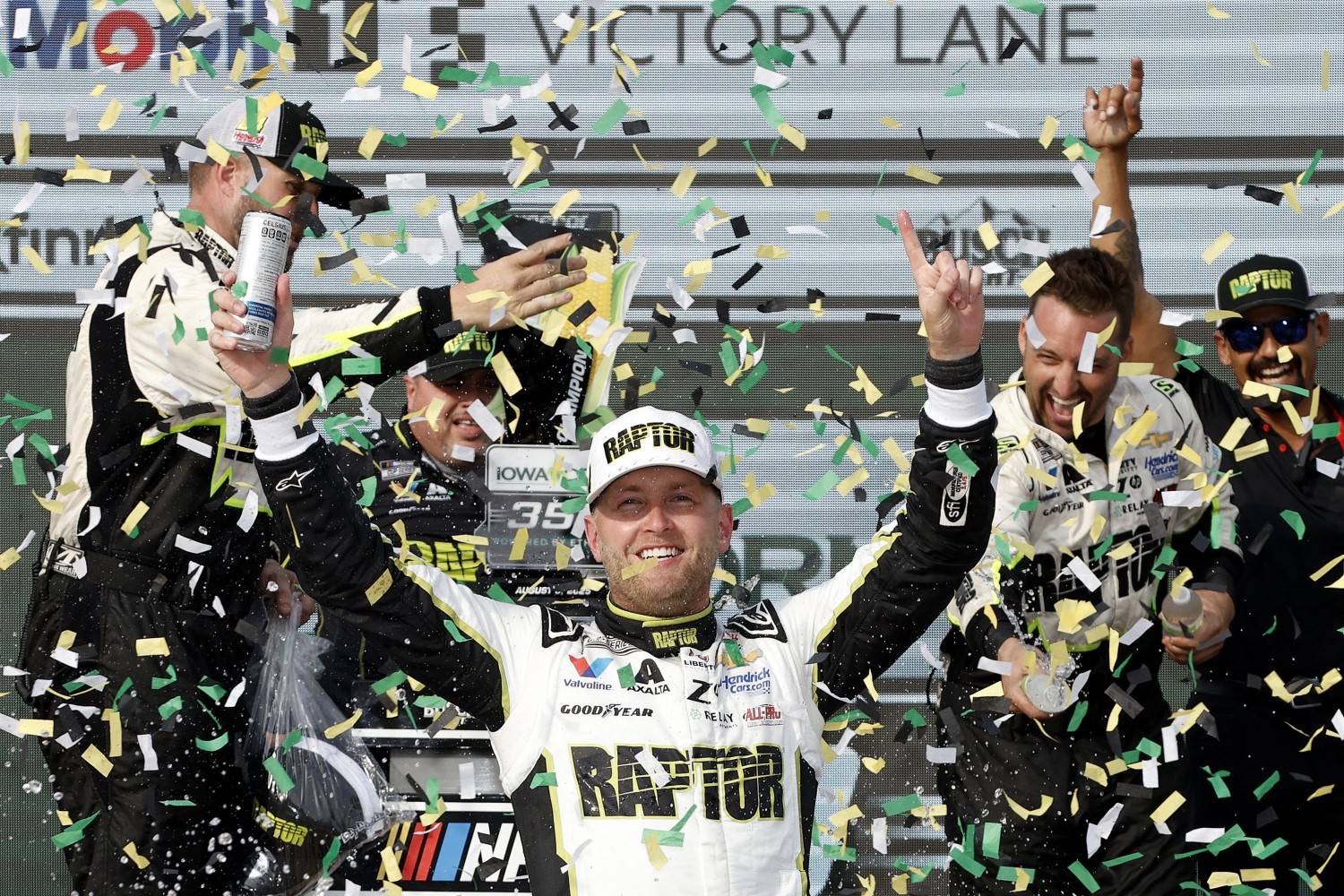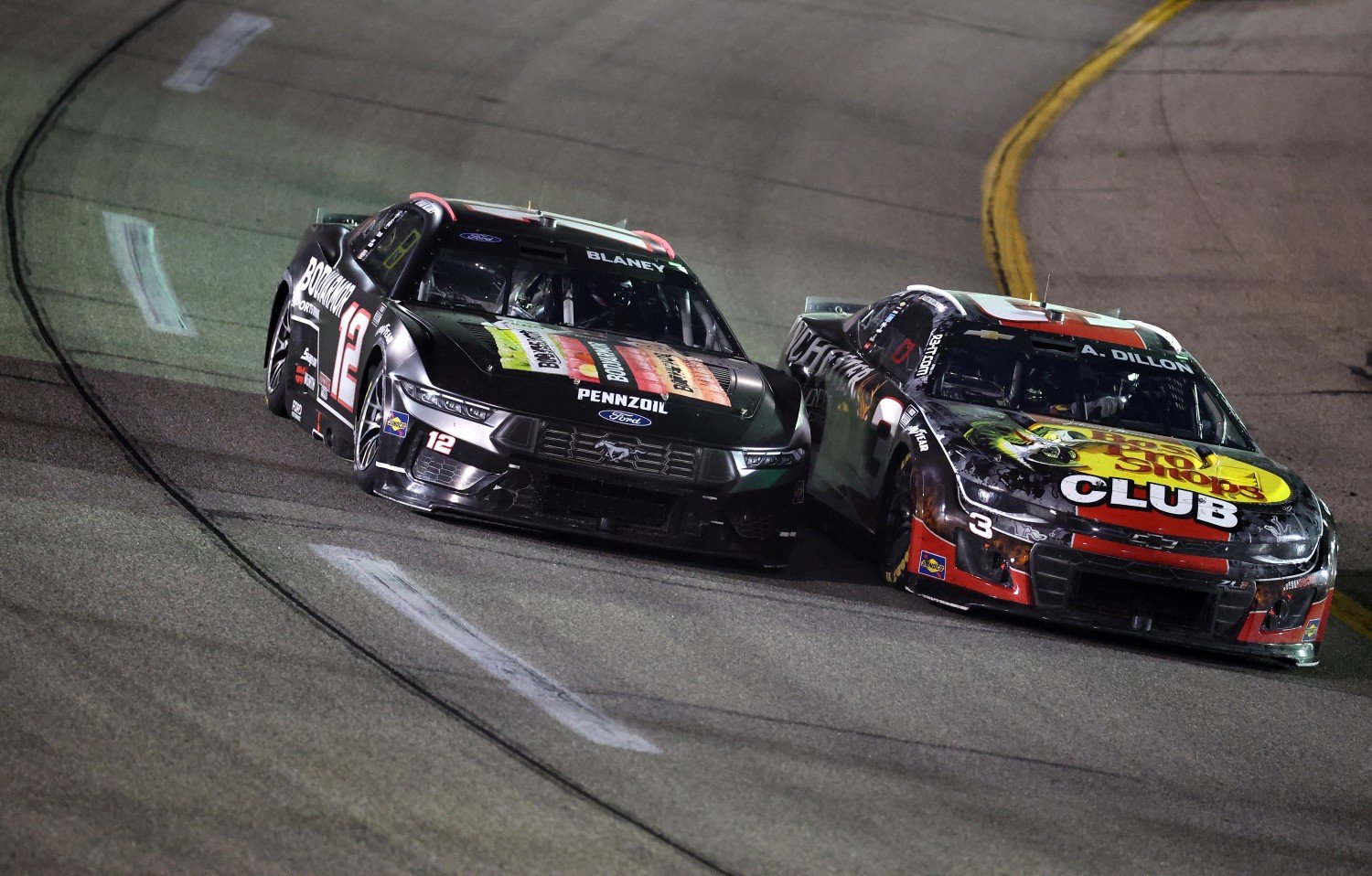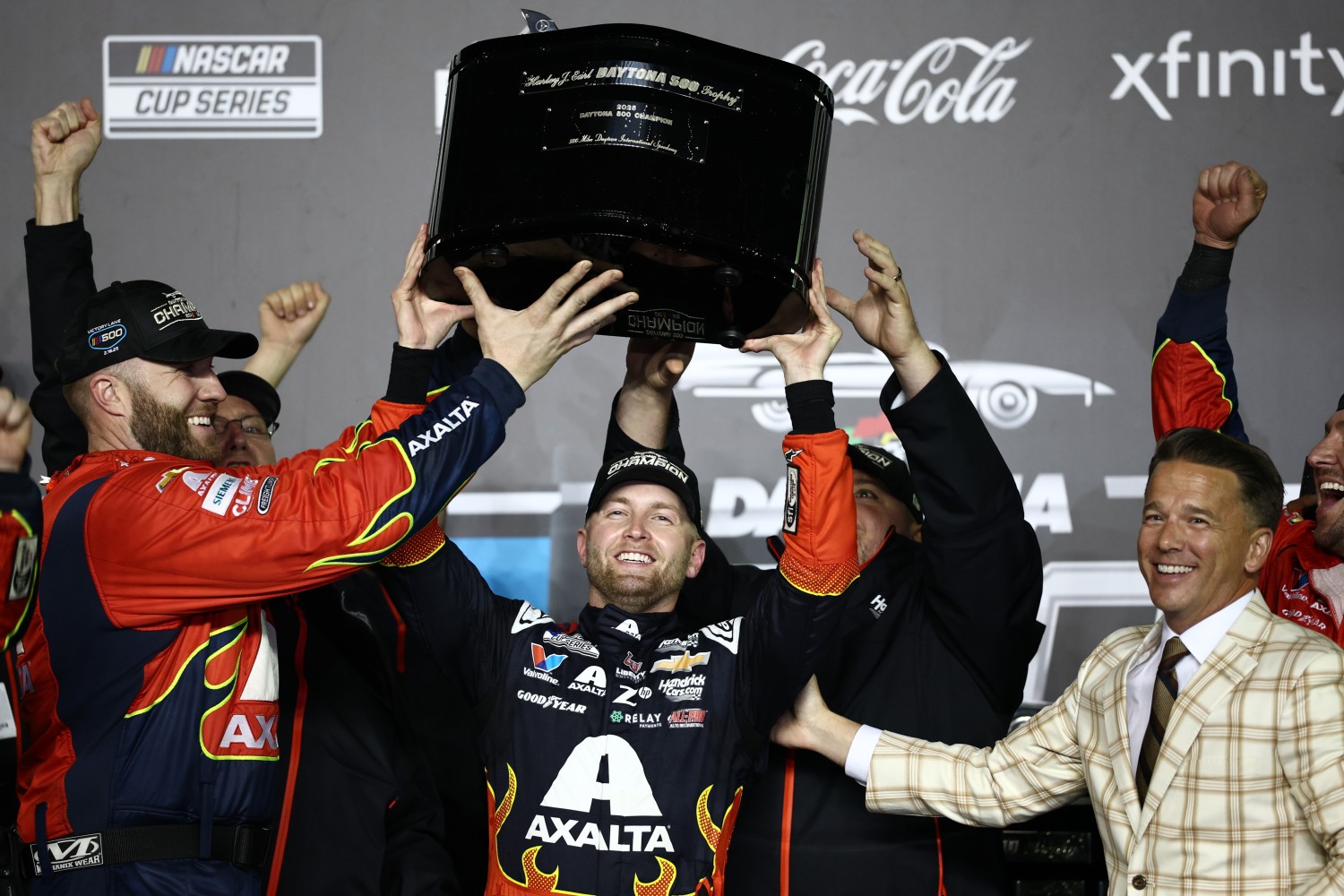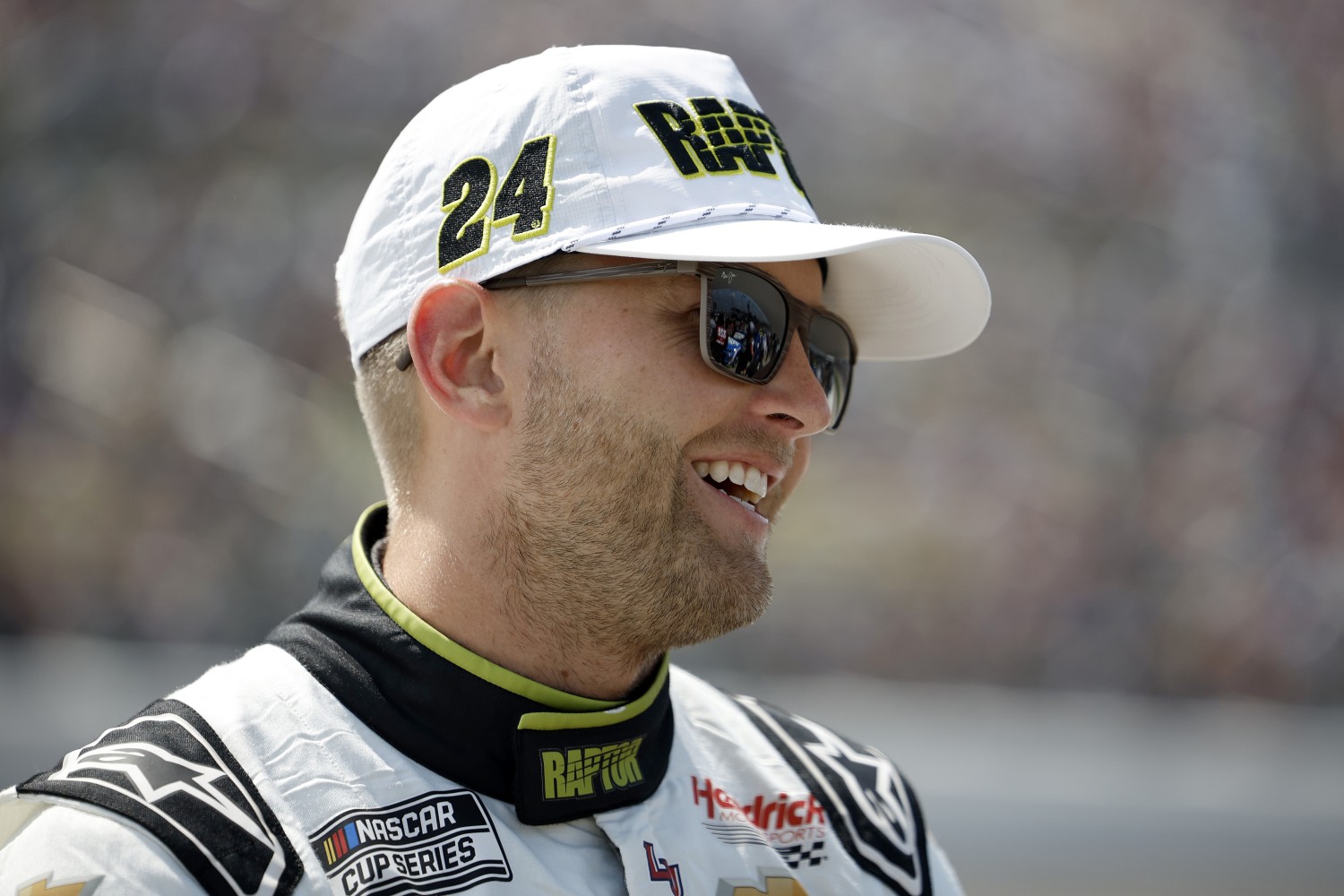NASCAR News: Byron clinches 2025 Regular Season Cup Title
The humid August night at Richmond Raceway buzzed with anticipation for William Byron (pictured). The 2025 NASCAR Cup Series was nearing the end of its regular season, and the Cook Out 400 was poised to be a pivotal moment.
–by Mark Cipolloni–
Byron, the 27-year-old driver of the No. 24 Hendrick Motorsports Chevrolet, stood on the cusp of something historic. With a 42-point lead over his teammate Chase Elliott entering the race, Byron needed only to maintain a 62-point advantage to clinch the 2025 NASCAR Cup Series Regular Season Championship—a title that carried not just prestige but a critical 15 playoff points to bolster his postseason campaign.

The Richmond short track, a 0.75-mile oval notorious for its tire management challenges and chaotic restarts, was no place for complacency. Byron, starting from P14, knew the race would test his team’s strategy and his own resilience. “This is our toughest track,” he admitted to his crew chief, Rudy Fugle, before the green flag. “But we’ve got a solid plan. Let’s execute.”
The race began with Byron methodically working his way forward, his No. 24 Liberty University Chevy slicing through the field. By the end of Stage 1, he was running in the top 10, benefiting from a smart pit strategy that saw him take fresh tires early, gaining crucial track position. The Hendrick Motorsports crew, led by Fugle, was in sync, their pit stops crisp and their adjustments precise. Byron’s confidence grew, but he remained cautious, aware that a single misstep could unravel his championship hopes.
Then, on Lap 198, chaos erupted. As the field barreled into Turn 3, Kyle Busch made contact with Chase Briscoe, triggering a massive 11-car pileup. Smoke and sparks filled the air as cars spun and slammed into one another. Chase Elliott, Byron’s closest rival for the regular-season title, was caught in the melee. Busch’s No. 8 clipped Elliott’s right rear, sending the No. 9 Chevrolet nose-first into the outside wall. Elliott’s day was done, his first DNF of the season, and with it, his shot at the regular-season crown evaporated.
Byron, navigating the high line to avoid the carnage, wasn’t unscathed. His car clipped Elliott’s spinning machine, damaging the splitter and right-side door. “I was losing my mind for a minute,” Byron later confessed, his heart pounding as he assessed the damage. “It was such a balance of managing tires and chaos on those restarts.” But the No. 24 team stayed calm. Fugle called for a quick pit stop to repair the damage, and Byron rejoined the race, still in contention.
As the laps ticked down, Austin Dillon seized control, outdueling Ryan Blaney with a brilliant strategy call from Richard Childress Racing to secure the win and a playoff berth. But for Byron, the race wasn’t about the checkered flag—it was about points.

Despite a late-race tire set that caused him to slip from third to 12th, his 12th-place finish was enough. With Elliott sidelined, Byron’s 68-point lead was insurmountable, clinching the regular-season championship with one race to spare—the second time in NASCAR history the title was secured before the regular-season finale.
“It feels damn good,” Byron said, grinning in the Richmond media center. “Best 12th-place finish we’ve ever had. We’ve been through a lot of adversity this year, but we stayed consistent and fast. This is a huge reward for the team.”
Significance for the Playoffs
Byron’s regular-season championship was more than a trophy—it was a strategic masterstroke for the 2025 NASCAR Cup Series playoffs. The 15 bonus playoff points he earned, added to the 17 he’d already banked from his two wins (Daytona 500 and Iowa Speedway) and stage points, gave him a total of 32 playoff points to start the postseason. This haul tied him with Denny Hamlin for the series lead and positioned him as a formidable contender in the 10-race championship chase.
In NASCAR’s playoff format, bonus points carry over through each round, providing a buffer against bad days and increasing a driver’s chances of advancing. For Byron, these points were a lifeline, especially given his rollercoaster season. After a blazing start with a second consecutive Daytona 500 victory in February and a points lead from March’s Circuit of The Americas, his summer had been marred by adversity—running out of fuel at Michigan and enduring five finishes of 27th or worse in a seven-race stretch. Yet, his win at Iowa and a P4 at Watkins Glen showed the No. 24 team’s resilience, and the Richmond crown cemented their turnaround
“Those 15 points are like winning three races,” Byron explained. “They give us a cushion to absorb a bad race or two in the playoffs. We’ve got speed, and now we’ve got a head start.”
The Richmond outcome also reshaped the playoff picture. Elliott’s crash eliminated his championship hopes, leaving Byron unchallenged. Meanwhile, Austin Dillon’s victory locked him into the playoffs, tightening the battle for the final spots at the upcoming Daytona race. Drivers like Tyler Reddick and Alex Bowman now faced increased pressure, with only one race left to secure their postseason berths.
Looking ahead, Byron’s focus shifted to Daytona, where he’d aim to become the first driver since Jimmie Johnson in 2013 to sweep both races at the iconic track. “You can’t drive in bubble wrap,” he said, embracing the aggressive mindset that had carried him to the regular-season title. “We’ll go out there, be fast, and try to win.”
As the playoffs loomed, Byron’s 32 playoff points and Hendrick Motorsports’ team synergy gave him a commanding edge. The question wasn’t whether he could compete—it was whether anyone could catch him. With the regular-season crown secured, William Byron was ready to chase the ultimate prize: the Bill France Cup in Phoenix.

